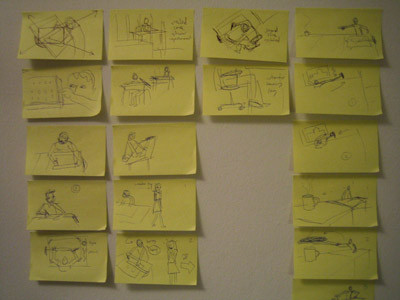Recommended Articles that Situate the Writing Center's Role in a Post-Process Digital Era Pre-2009
Boquet, Elizabeth and Neal Lerner. "Reconsiderations: After 'The Idea of a Writing Center'" College English 71.2 (2008): 170-189.
The authors trace scholarly responses to North's seminal piece as part of an inquiry into why so little mention of writing centers is found in composition journals. Maybe, say the authors, framing the conversation as an "idea" is part of the problem. In light of technological developments including online distance learning, the theory that informs writing center practice and classroom practice should no longer be considered separate for "few sites are as rich with promise for understanding the everyday practices that students bring to their writing as the writing centers on our very own campuses..."
Ede, Lisa and Andrea Lunsford. "Some Millennial Thoughts about the Future of Writing Centers." The Writing Center Journal. 20.2 (2000): 33-38.
The authors make the case that because writing centers are known for their interdisciplinary and collaborative nature, and the ability to quickly respond, they are ideally suited, poised, to take a leading role during a transitional era when technologies hasten a reconfiguring not only of what constitutes a texts but also long-held notions of traditional taxonomies and disciplinary frameworks. As more classes move online, they see writing centers as an increasingly precious space in which students can feel part of a learning community.
|
Pemberton, Michael A. "Planning for Hypertexts in the Writing Center ... Or Not." The Writing Center Journal. 24.1 (2003): 9-24.
Pemberton provides a needed counterpoint when asks whether writing centers can be "all things to all people" -- he suggests decisions over whether to train tutors in the rhetoric of hypertext must be made based on "local needs and resources." He also offers a critical overview of how writing centers have viewed and used new technologies in the past in response to social conditions such as the 1930s, when college enrollments tripled "as the children of immigrant families turned to higher education as a means for social advancement."
Trimbur, John. "Multiliteracies, Social Futures, and Writing Centers." The Writing Center Journal. 20.2 (2000): 29-31.
This article, published the first year of the new millennium, is a pivotal piece in the conversation for adding multimodal literacies to writing center practice. The highly respected scholar writes that the topic arose during recent "heated discussions" over renaming the writing center at Worchester Polytechnic Institute, where at the time he worked as a professor, to the Center of Communication Across the Curriculum, a move "indicative of recent trends ... to see literacy as a multimodal activity in which oral, written, and visual communication intertwine and interact" in the 21st century.
With these articles in mind, we now move on to articles post-2009. Click here to read why we are arguing for the inclusion of these articles .

